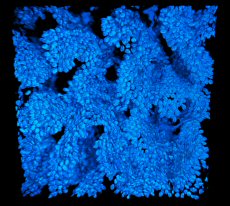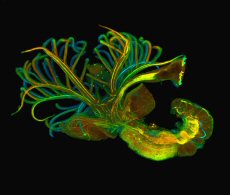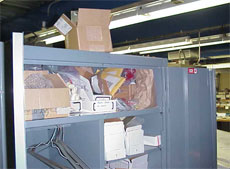|
Mon., February 19
2:30 p.m. Particle Astrophysics Seminar -
Curia II
Speaker: J. Newman, Lawrence Berkeley National Laboratory
Title: DEEP2 and Beyond: Testing Fundamental Physics with Surveys
3:30 p.m. SPECIAL DIRECTOR'S COFFEE BREAK -
Come and see the LHC at the Fermilab Remote Operations Center - Atrium East
4:00 p.m. All Experimenters' Meeting - Curia II
Special Topic: LEMC Workshop Highlights and 6D Muon Cooling Experiment
Special Announcement: Fermilab will host a Blood Drive on February 19 and 20, in the Wilson Hall Ground Floor NE Training Room from 8:00 a.m. to 2:00 p.m. on both days. Appointments can be scheduled on the ES&H Website, or by calling Margie at x3411 or Diana at x3771.
Tue., February 20
11:00 a.m. Academic Lecture Series - 1 West
Speaker: T. Becher, Fermilab
Title: Course 4, Part 2: QCD Effects in B Decays
3:30 p.m. Director's Coffee Break - 2nd floor crossover
4:00 p.m. Accelerator Physics and Technology Seminar -
1 West
Speaker: V. Yakovlev, Omega-P, Inc., New Haven
Title: Alternative RF Solutions for High Gradient Investigations
Click here for NALCAL,
a weekly calendar with links to additional information. |
|
Wednesday, February 21
Lunch
-Spinach Strudel
-Confetti Salad
-Orange and Olive Oil Cake
Thursday, February 22
Dinner
-Sancocho
-Roast Suckling Pig
-Moro y Cristanos
-Chayote Guisado
-Pineapple Flan & Tropical Fruit
Chez Leon Menu
Call x4598 to make your reservation. |
|
|
Beauty and the Beasties:
Microscopy Exhibit on 2X


Top: Cell nuclei of the mouse colon. Bottom: Spirorbis sp. (aquatic worm).
The winning submissions to the 2006 Nikon Photomicroscopy Competition began a two-month exhibition in Fermilab's Art Gallery on Wednesday, Feb. 14, demonstrating that scientific data can be beautiful as well as informative. A panel of judges ranging from artists to scientists selected 20 winners from over 1500 images submitted from around the globe, using criteria of originality, content, composition and technical proficiency. From the cottony seed of a climbing shrub to the shiny surface of superconducting sapphire, the subjects of these images have only one thing in common: they were captured through a microscope.
Paul Appleton of the University of Dundee in Scotland won first place in this year's 32nd annual competition with his photomicrograph, "Cell nuclei of the mouse colon." His research on the cells in the intestinal tract of normal animals allows him to measure early changes leading to tumors in this tissue. "The image shows that even the most unlikely subjects can be beautiful," Appleton wrote in his acceptance letter to Nikon.
Specific imaging techniques vary from simple to sophisticated to create the brilliant colors and contrasts evident in the exhibit's winners. The second-place photo, by artist Raul Gonzalez, depicts a cyanobacteria strand next to a diatom -- a type of algae -- photographed through a simple light microscope similar to those used in grade-school science classes. Third-place winner Jens Rüchel, a zoologist at the University of Osnabrück, Germany, captured an aquatic pond worm using a confocal microscope, which employs lasers and fluorescence to depict a three-dimensional image.
The exhibit will be on display in the Fermilab Art Gallery until April 15, with a reception on March 16 from 5-7 p.m.
--Christine Buckley
Learn more, see more images
|
Weird timing

Dear FT:
Enclosed is a picture taken February 5, when the temperature was -7 degrees Fahrenheit. I thought these Robins looked a little confused.
Editor responds:
We were confused, too. We asked our resident bird expert, Peter Kasper, to explain. He writes:
"Despite common lore, robins have always over wintered in the Chicago area, albeit in very small numbers. However, the number of robins spending the winter here has risen sharply in recent years. This is very evident from the Christmas bird count data which spans the last 30 years. (Find more on the Fermilab bird webpage.)
"Robins behave very differently in winter and summer. In the summer they are most often seen singly or in pairs feeding on the ground where they search for worms, grubs and insects. In winter they congregate in flocks and are much more likely to be found feeding on berry bushes."
|
|
|
On the cutting edge

A Fermilab employee recently cut a finger reaching into the top of this cabinet to retrieve a part. Four sutures were required to close the resulting flap laceration. The sharp metal edge has since been filed smooth.
Skin cuts, including lacerations and punctures, are common injuries. Over the past 22 years, 442 such injuries have been reported to the Fermilab Medical Department. This represents 9 percent of our total work injuries. Three-fourths of the cuts were recordable, primarily due to the need for suturing. In fact, fewer than 10 percent involved lost or restricted duty days.
Nearly all cuts were caused by some part of a hand (and especially fingers) coming into contact with a sharp metal edge. Forty-two percent were caused by a tool specifically designed for cutting such as a knife, razor, or scissors. Thirty-four percent resulted from a metal component on an assembled product such as a tool, box, cabinet, or shelf. Most of the rest involved a solitary metal part such as a sheet, pipe, lamination, or machined piece.
What can we do to minimize the risk of cuts?
- Use the proper cutting tool for the job. Specialized tools are generally safer than open blades.
- Watch out for sharp edges on metal products. These are often "hidden" in sheet metal furniture (see picture).
- Wear appropriate protective gloves as long as this does not present an entanglement hazard.
- Get your cuts checked out by the Medical Department. There is always a risk of infection. If in doubt, call Medical for advice (x3232).
Safety Tip of the Week Archive
|
Science Magazine,
February 7, 2007:
A Half-Century Late, Alternative Accelerator Takes Off
It's not quite a cyclotron and not really a synchrotron, but the fixed-field alternating-gradient synchrotron could create a whole new role for particle beams
When physicists started developing particle accelerators known as fixed-field alternating-gradient synchrotrons (FFAGs), Dwight Eisenhower was president of the United States, and Elvis Presley was a promising unknown. Now, 50 years later, researchers are starting to build FFAGs that really work. Proponents say these accelerators may bring particle beams to bear on new fields and applications: destroying tumors with pinpoint precision, slashing the half-life of radioactive waste, and teasing out the properties of the most fundamental particles of matter.
Read More (subscription required)
|
|
Weight Watchers at Fermilab
The Recreation Office is looking for at least 18 people who are interested in forming a weight-watchers group at Fermilab. Member benefits include convenient, onsite meetings at noon; improved morale and team-building with your co-workers; guidance in weight management; and minimizing health care costs. Payment Options are available. Contact Jean at x2548 or Kathy at x 5427 if you are interested in participating. Deadline to contact the Recreation Office is Friday, February 23.
Upcoming Activities |
|